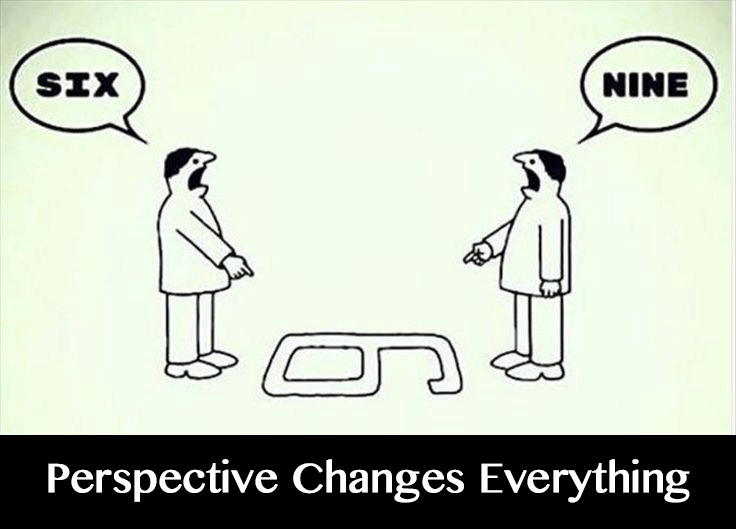You’ve probably seen this meme:

And of course the caption tells us the point. We are supposed to take this as illustrating the idea that other perspectives are equally valid as our own.
Let’s look at a real world example.

Here we have a photograph of the meme situation: a figure painted on the ground that could be seen as either a 6 or a 9, depending where you stand. If a person looks at this and says “nine”, we would probably understand their perspective. But is it valid? Is “their truth” that it is a nine equal to “my truth” that it is a six? Or could it be that even though, indeed, without context it could appear either way, one is still true and the other is still false?

Oh no what’s this? As we zoom out we see more context. We see now that the curve is not an isolated and ambiguous digit. It is now part of a sequence, and the sequence makes sense. We now see that if we look from one side, it is the sixth digit in a sequence of seven matching digits, and the whole thing becomes quite rational and consistent. Sure, hypothetically, someone still could have made a mistake and drew their 9 upside down, but it’s pretty clear from the context that this isn’t “just as likely a nine as a six.” Instead, we see the intent of the symbol clearly, and it becomes obvious that anyone trying to argue it is or even might be a nine is just detached from reality.
Just because an idea makes sense to someone from their perspective does not mean it is objectively true, and merely being a valid expression of a perspective should not be confused with an idea being equally valid as all others.
Leave a Reply
You must be logged in to post a comment.